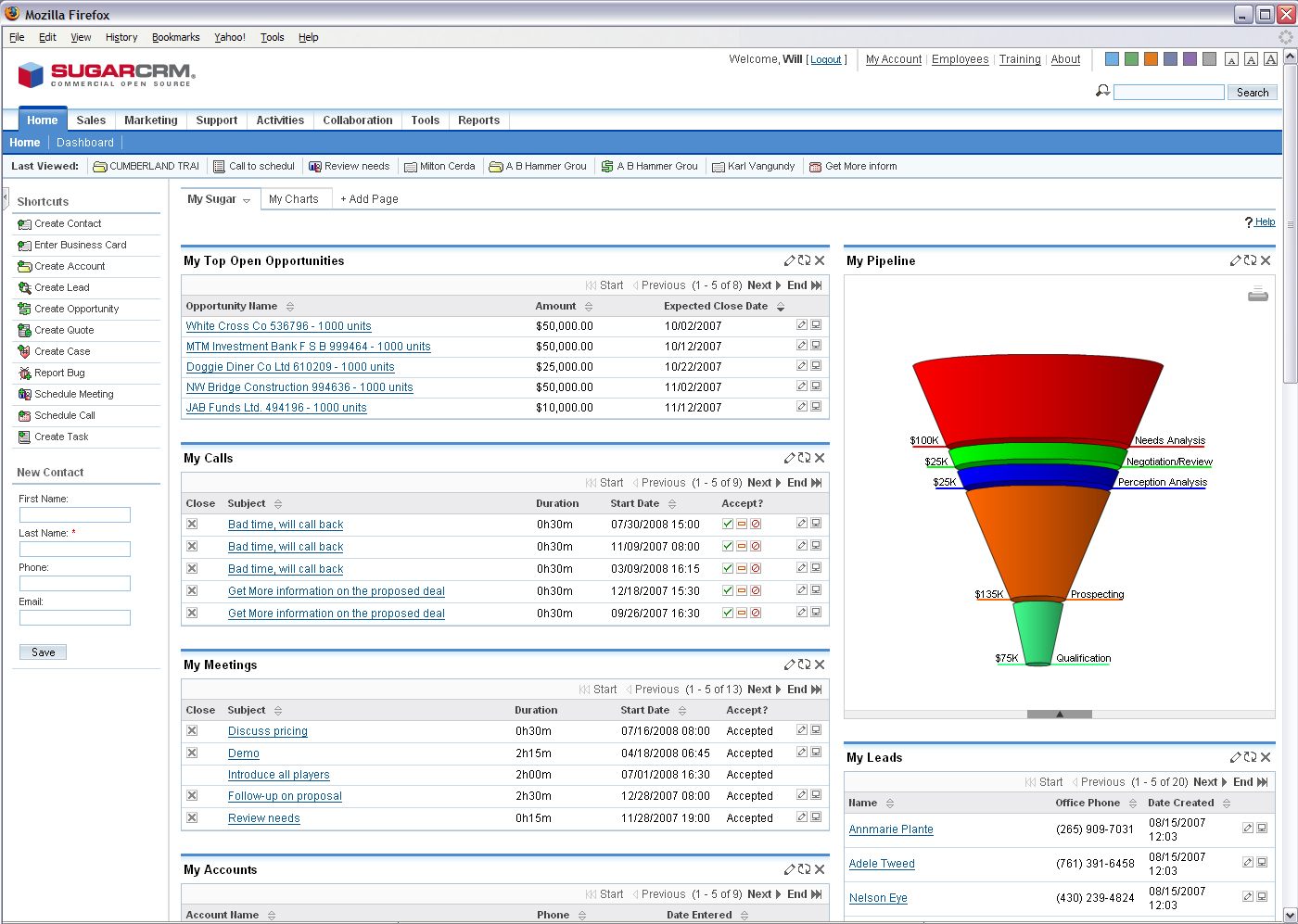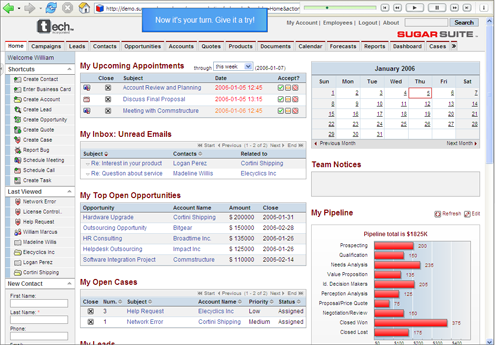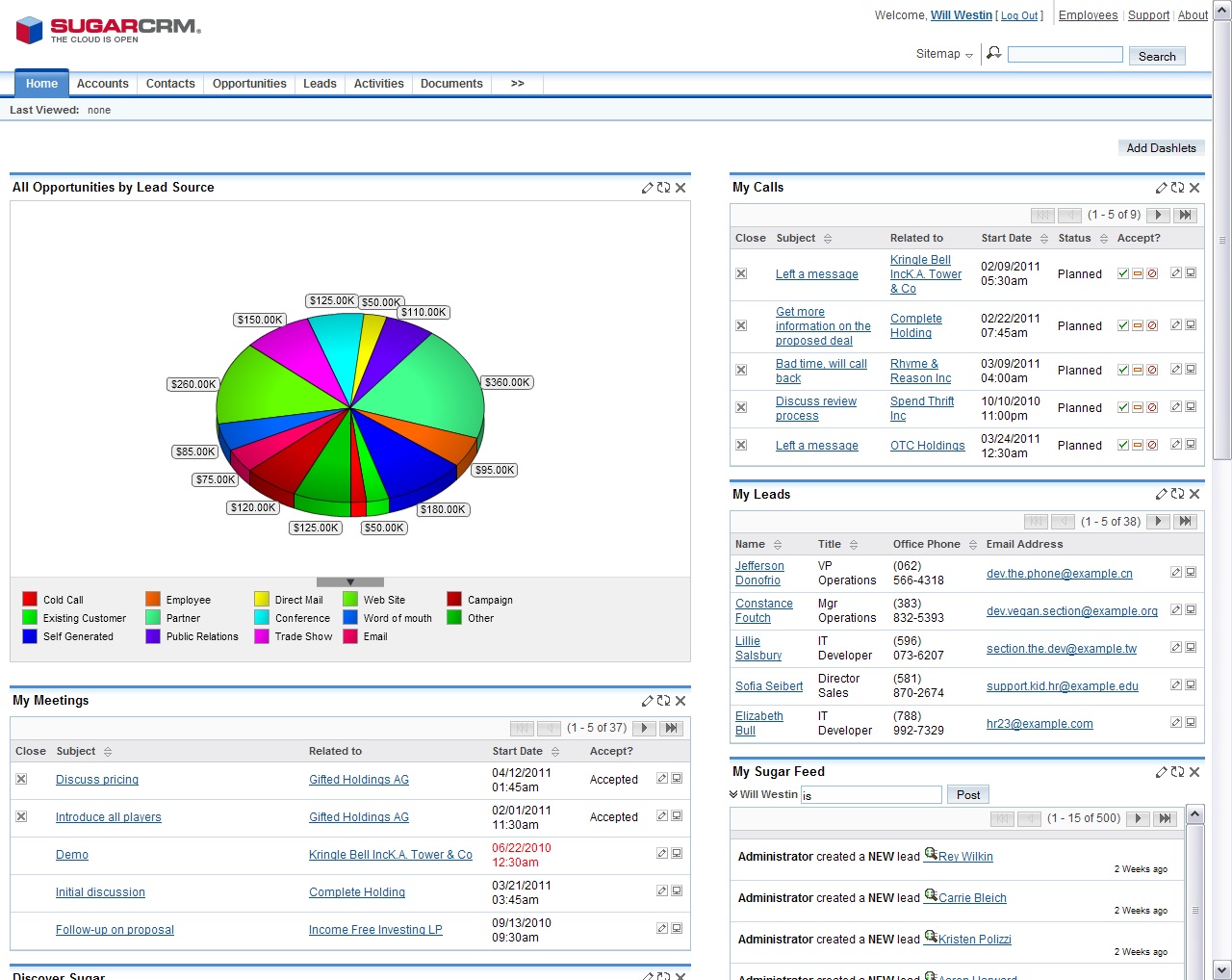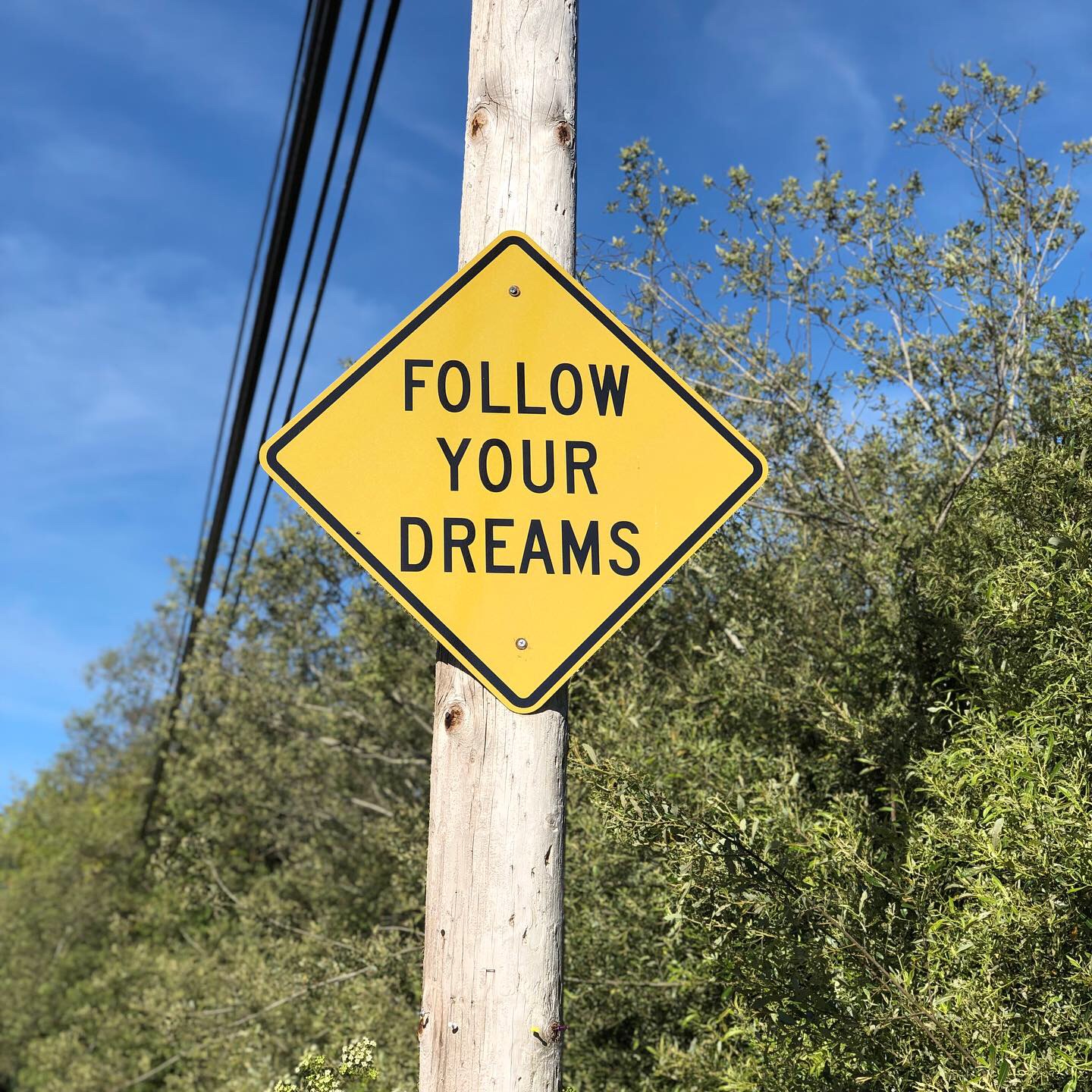CRM
SugarCRM Ready for Major Shifts in Software Market

CRM solutions are evolving as customer interaction becomes heavily reliant on social and mobile technologies. SugarCRM’s CTO, Clint Oram, discusses their vision of a CRM that promotes an open discussion between the business and its customers.
To learn more about SugarCRM, visit their website or review their product profile.
What is SugarCRM’s mission?
Our mission is to empower every company in the world to gain and retain customers using our open and intuitive relationship management solutions. We’re all about empowering companies to grow. We don’t do “customer” management so much as relationship management. A lot of our customers are government institutions, non-profits, or membership associations, so the word “customer” can be seen more as “constituent” relationship management or “client” relationship management.
Download the 2014 Top 40 CRM Software Report
The CRM marketplace is poised for massive growth and SugarCRM is going to be at the forefront of that by delivering next-generation solutions into the hands of people who have never used CRM before.
In what way?
There are some key trends defining technology today. Mobile, social, cloud, and ecosystems are transforming the way people around the world organize themselves and expect to do business. Cloud technology, for instance, is cheap to sell, meaning you can try out new ideas quickly. Or think about ecosystems. Companies like RIM are challenged right now because they didn’t really learn how to embrace an ecosystem. When Apple came out with the iPhone and redefined the mobile marketplace by building an ecosystem around their product, it caught the folks at RIM by surprise and dethroned the Blackberry. Google also did a lot of the same things that Apple was doing but approached it with an open ecosystem perspective. SugarCRM is building an open ecosystem to drive innovation more quickly and unlock possible business models across the board, which is going to be a real differentiator when you look at Sugar vs. Microsoft or Salesforce.com.
Social collaboration and mobile technology help businesses be successful to all their customers. They enable rapid reply and unlock the hidden synergies within a business. This is changing the way we work and interact with our customers. One of the most profound differences it has made is the idea that your customers are in control. Traditionally, it has been up to the company whether they choose to respond to a customer. If you were upset, what was your recourse? You would call into the customer service who may or may not have routed you to the right person. What would you do from there? Write a scathing letter to the president of the company? Today, if a company doesn’t adequately respond to your feedback, you’ve got a worldwide stage. For example, in 2009, a musician named David Carroll took a United plane ride from St. Louis back home to Canada. While going through baggage claim to pick up his guitar, Carroll noticed it was damaged. United chose to ignore his customer claims and refuse responsibility for their actions. So he wrote a song about their bad customer service and posted it on YouTube, and it received over ten million views. Having a worldwide stage like that has shifted control of the dialogue from the company to the customer. Businesses have to be engaged and be part of that dialogue. If they’re not, it’s going to work against them.
How does this affect the CRM market specifically?
The very first CRM applications came out in the early nineties. By the mid-90s, Salesforce was already a well-established company, but CRM was reserved only for customer service. Now, almost twenty years later, it has grown into a healthy market with a lot of room for different vendors. Not one of these vendors represents more than 15% of the market share.
There are 900 million people using Facebook today to manage their personal relationships. LinkedIn has 150 million users. But there are less than 20 million CRM software users across all the CRM vendors added together. That’s because CRM is pretty expensive. Billion dollar companies are still using Excel to manage their business and customer service interactions. It is pretty amazing how wide-spread the use of Excel is. It is the number one leading software application in the world today. So what does Sugar do all day long? We don’t replace CRM vendors, we replace Microsoft Excel.
What should the number of CRM users actually be? There are 3 billion email accounts in the world today. A quarter of them are being used in the business environment. Let’s say an average of 50% of these business users interact with customers, which would be 375 million potential users of CRM. Yet, we have less than 20 million users out there. As I mentioned, cost is a big argument. Sugar is successful in that area because of our price elasticity. Secondly, I would argue that CRM applications generally are too complex. So how do we enable tens of millions of users to adopt easy to use, intuitive CRM applications that incorporate social and mobile tools? That is our roadmap.
CRM is a crowded market, so what inspired you to add SugarCRM to the mix?
One of the reasons why I built my personal career around CRM and why I find it exciting and interesting is that it’s constantly changing and evolving. CRM is the kind of business software that’s a direct reflection of the changes around you. You have to be competitive and you must constantly evolve at a much higher rate than any other business application category.
If you look back at 2004 specifically, when Sugar was founded, there were some interesting trends happening. We had all come out of our dot-com days, and a lot of people were predicting the end of enterprise software. Out of that came three technologies that were highly innovative at the time. One was subscription billing – the idea of driving down upfront costs. The second was Software-as-a-Service, where the vendor runs the software for you and are more likely to do it better than you. And the third was open source. We saw an opportunity to build an open source community around business application software. We were the first venture-funded business application software company to create solutions around a commercial open source model, and that gave us a unique approach to the marketplace. We built it around subscription billing, Software-as-a-Service and open source, and that’s how we got our launch. Open source isn’t as much of a differentiator anymore as it was in 2004. But that core philosophy of openness and building a relationship with our customers has really become who we are, and it’s what sets us apart from other companies.
How do you measure success at SugarCRM?
We currently have just north of one million users of our software around the world. Half of our business is outside of the United States and SugarCRM is translated into over 26 different languages. What I consider the measure of success is having not one or ten million users, but tackling the issue of getting to one hundred million users. I think the CRM market is poised for a massive explosion as a variety of vendors such as SugarCRM recognize the social and mobile power of platforms, which are easy to use, easy to adopt, and can be molded into day-to-day practices, which is going to change the CRM landscape in a massive way. Those that recognize, embrace, and drive that change are going to be the ones that succeed.
Who do you think are the most interesting people or companies in your market segment right now and why?
Engajer offers a set of tools that allows sales people to send out email campaigns to their prospect with a recorded message from the CEO giving his pitch. The idea is to have clickable functions so that the sales person can track not only who opened the message, but what they had to click to get to the areas where they spent the most time. I think that is a fantastic niche use of cloud technology.
Another company that I think is unique is Contactually. The CEO there, Zvi Band, built a solution that compares everyone you’re emailing against your CRM system to see which of your contacts are also your customers. It reminds you to send someone an email even if you have fallen out of contact with them. So it manages existing relationships while rebuilding old ones.
Looking to compare SugarCRM and customer relationship management platforms to find the best fit for your business? Be sure to download our Top 40 CRM Software comparison report to review key features, pricing options and deployment models of the leading CRM solutions.










